Windows 10 error cannot be Sleep, this is a fix
Sleep mode on Windows is one of the extremely useful features for computer users with repeated frequencies.
However, after upgrading to Windows 10, quite a lot of users reflect that this Sleep mode does not work. So how to fix this error, please refer to the following article of Network Administrator.
Fixing Windows 10 errors cannot go into Sleep mode
- 1. Change Power Plan settings
- 2. Check Power Requests
- 3. Run Windows 10 Troubleshooter
- 4. Update Driver Chipset
- 5. Check out the nearest 'wake up' events
- 6. Check the compatibility of connected devices
- 7. Reboot PC in Safe Mode
1. Change Power Plan settings
To fix the problem that Windows 10 computers can't sleep, the first solution you can think of is to change the Power Plan settings.
Step 1:
First click on the Start button, then select the Settings option.
Step 2:
On the Settings window, select System => Power & options .
Step 3:
Make sure the Sleep option is set to value. Click to select Additional power settings option to access Additional power settings.
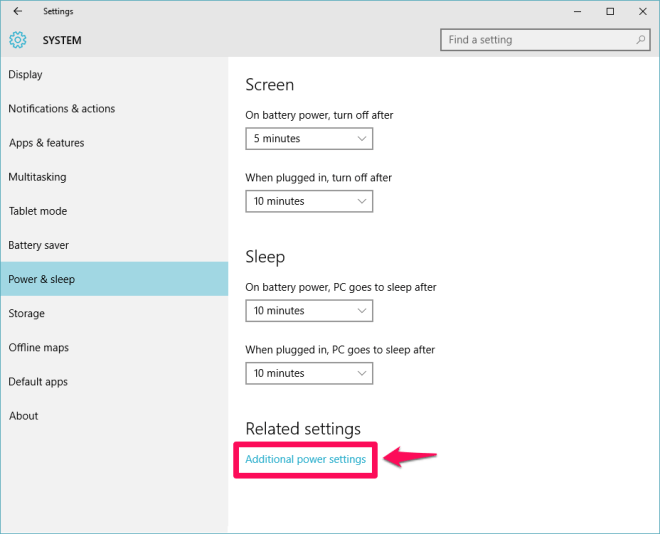
Step 4:
From the Preferred Plan item you choose, click Change plan settings next to the Plan (Balanced (recommended), High performance, or Power saver) that you are using on your Windows 10 computer.
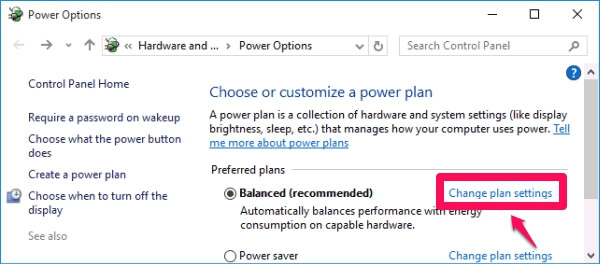
Step 5:
On the Edit Plan settings window, click the link Change advanced power settings.

Step 6:
The Power Options dialog box appears on the screen. To fix Sleep errors on Windows 10, you just need to expand all settings to find and activate Sleep mode on all settings.
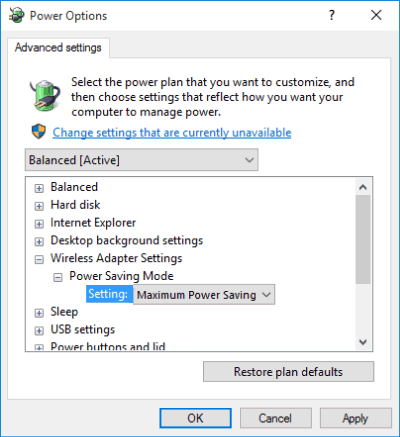
Step 7:
Go to Multimedia settings => When sharing media and select Allow the computer to sleep , then click OK to apply the change.
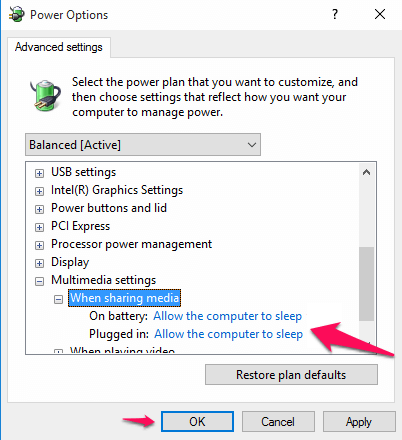
In case if you do not want to expand all settings to check if Sleep mode is enabled or not, just click Restore to Defaults to fix the error.
2. Check Power Requests
Step 1:
To check if all Power Requests are active on your computer, first open the Command Prompt under Admin.
Step 2:
Next enter the following command into the Command Prompt window and press Enter:
powercfg -requests
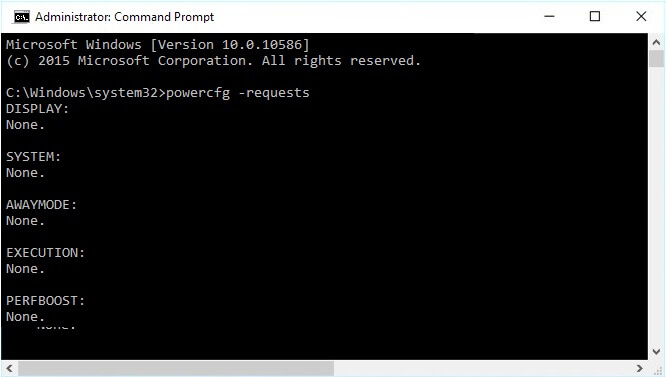
Step 3:
If you see SRVNET, it means that a service request is sent by some application. You can check which application is running from Task Manager and close the application.
3. Run Windows 10 Troubleshooter
If you've applied the above two solutions and still can't fix the error, then you might think of a solution to run Windows 10 Troubleshooter to fix the error:
Step 1:
Open Control Panel on your Windows 10 computer and then click Troubleshooting.
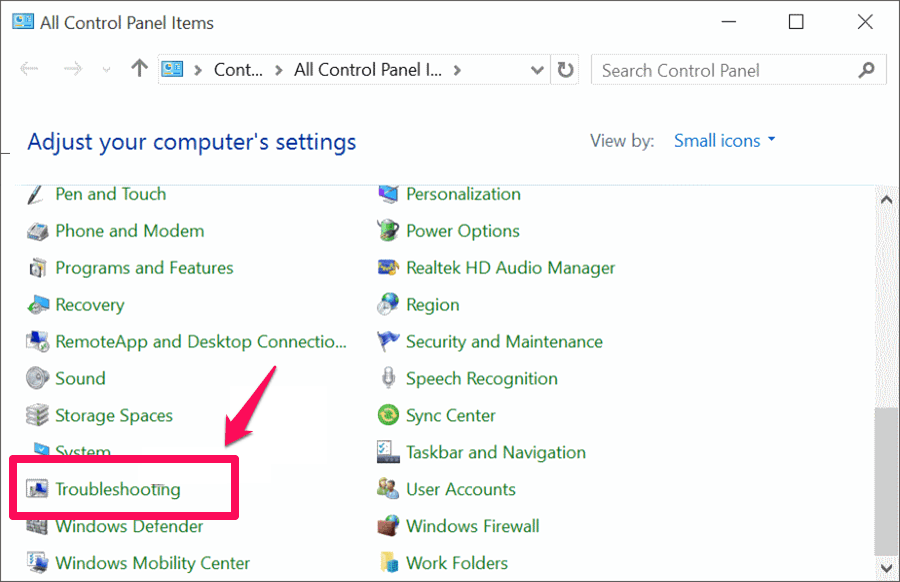
Step 2:
Next on the Troubleshooting window, click View All to see the list of Troubleshooter available on your Windows 10 computer.
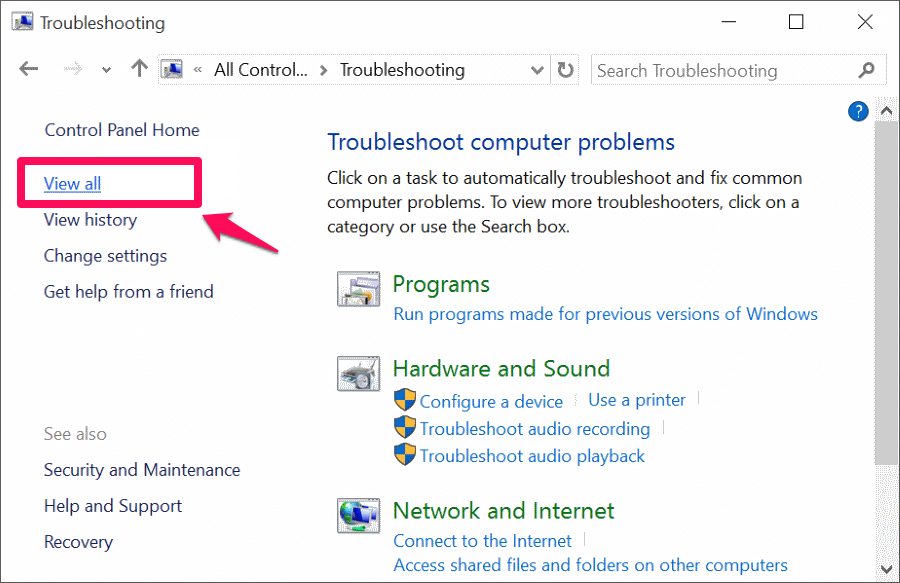
Step 3:
On the Troubleshooter computer problems window, run troubleshooter of Power and System Maintenance.
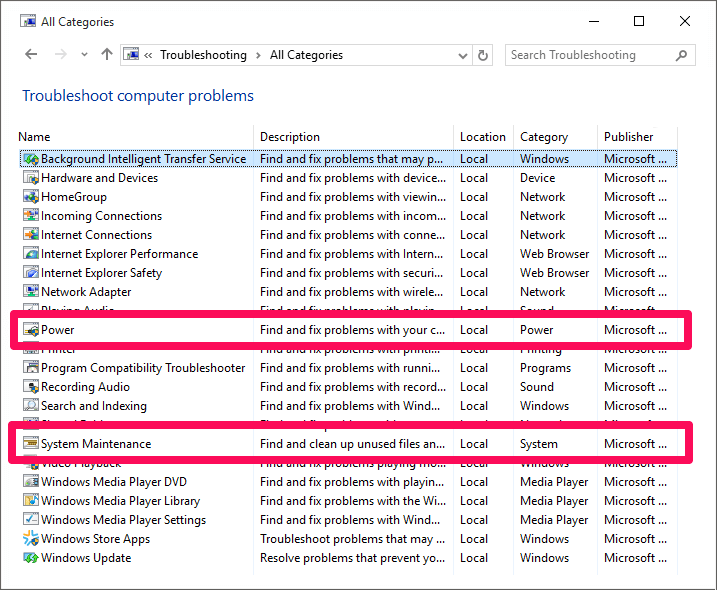
Step 4:
After the process has finished, check if the Sleep error on your Windows 10 computer is fixed.
4. Update Driver Chipset
Please check if the driver has been updated. The most important ones are chipset, network, audio and BIOS drivers. Ensure that you are running the latest version of Windows 10 is also recommended.
In addition, you can use the help of automatic driver update tools. These tools will detect the latest version of the chipset driver, then you can download and install this driver version on your computer.
- Check last modified version and date numbers : Download the DriverView utility from Nirsoft ( download link: http://www.nirsoft.net/utils/driverview.html ). Check the version number, installation date, creation or modification date and driver's digital signature.
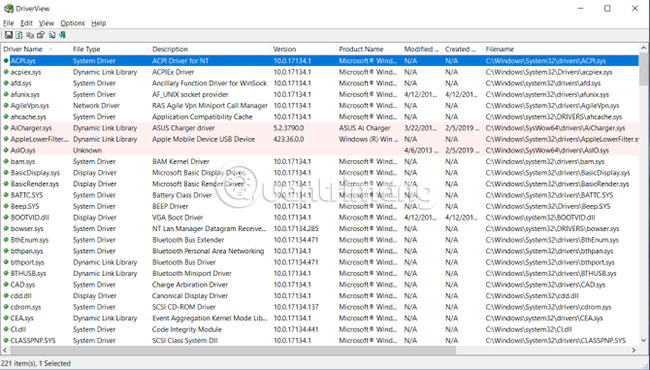
- Driver update : Windows will automatically update the driver via Windows Update. This is a completely safe and reliable method because Microsoft verifies the drivers for the system and updates them as needed. You can also update your drivers through Device Manager. Right-click the driver and select Update driver.
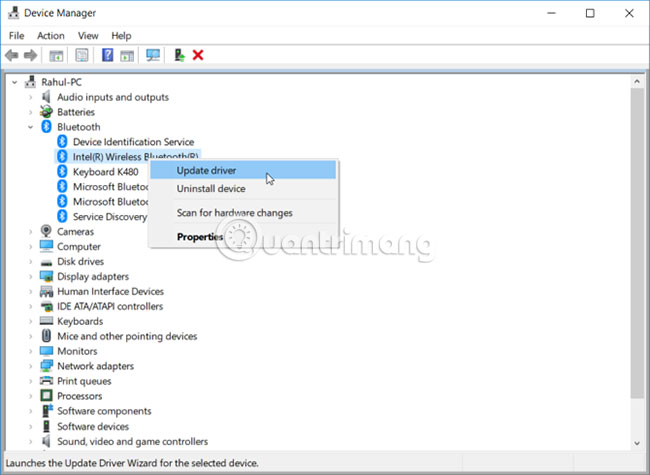
- Check the manufacturer's website : Most PCs will include a DVD and a support website lists all the drivers that are compatible with their version number. Please bookmark the site again and check for periodic driver updates.
Never download a third-party application that requires driver updates. These sources are not reliable and can make the system unstable.
After you have installed the driver, restart your computer and check if the error has been fixed.
5. Check out the nearest 'wake up' events
If your PC is "awake" suddenly from Sleep mode and you want to know which device has enabled this 'wake up' event, use the following command:
powercfg -lastwake To see a list of devices that "wake up" the system, enter:
powercfg -devicequery wake_armed In the screenshot below, you will see that the Ethernet adapter is causing the PC to suddenly wake up.
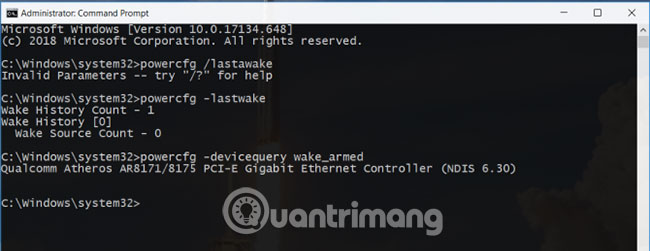
Open the driver network adapter in Device Manager, right-click the driver and select Properties.
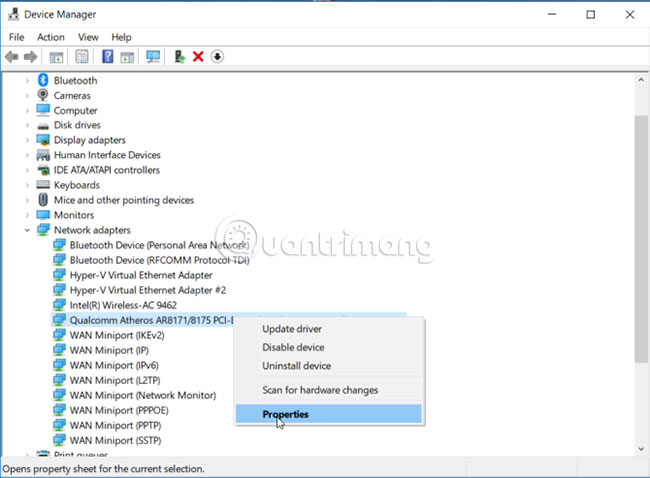
In the Power Management tab , uncheck Allow this device to wake the computer . You can leave this option enabled and check the Only allow a magic packet option to wake the computer to prevent everything except Wake-On-Lan packets that wake up the PC.
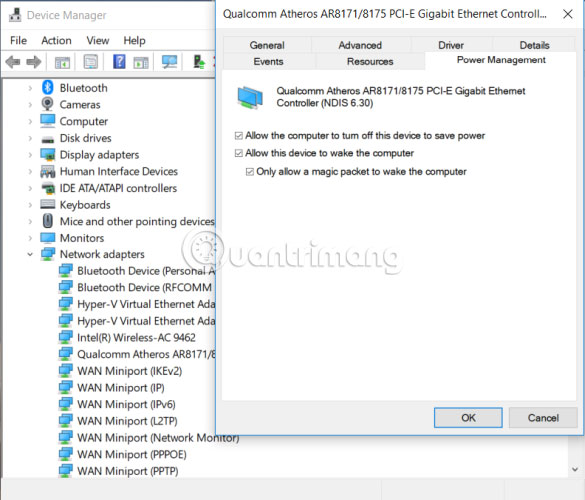
6. Check the compatibility of connected devices
It is also possible that some devices connected to the PC are not compatible with the Windows 10 version. Some manufacturers take a long time to release updates before they are compatible with the new Windows version. than. These devices may include printers, scanners, game consoles, webcams, etc.
Visit the manufacturer's website and check if there are any compatibility issues. If there is no problem, unplug the device and check if the problem with Sleep mode remains.
7. Reboot PC in Safe Mode
Problems with Sleep mode are often caused by the complexity of hardware and software during the boot process. To check if this is the case you are having, restart Windows 10 PC in Safe Mode and see if it can go into Sleep mode. If possible, you will need to perform a clean boot to minimize errors.
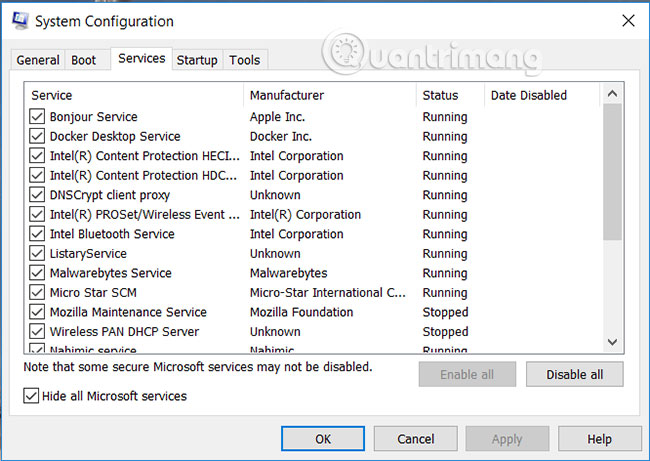
Refer to some of the following articles:
- Unlock hidden features on Windows 10 with some Registry tricks
- How to re-activate Windows 10 after changing the hardware?
- Instructions for fixing errors do not turn off Windows 10 computers and laptops
Good luck!
You should read it
- How to troubleshoot problems with Sleep mode in Windows 10
- How to set up a Windows 11 PC to automatically go to Sleep
- To enable or disable Sleep mode in Windows 10
- Wifi on Windows 10 does not connect after starting from Sleep mode
- Ways to enable sleep mode on Windows 11 PCs
- Steps to customize Sleep mode settings on Windows 10
- How to disable Sleep mode on Windows 11
- Here are the 3 fastest ways to put your computer to sleep
May be interested
- Find the reason why there is no Sleep mode in Windows 10/11
 the reasons and how to fix when the computer does not have sleep mode in win 10/11 have been fully provided. see now if you are experiencing this error!
the reasons and how to fix when the computer does not have sleep mode in win 10/11 have been fully provided. see now if you are experiencing this error! - Fix Wi-Fi and Bluetooth Lost After Windows Goes to Sleep
 if your windows laptop's wi-fi and bluetooth disappear after waking up from sleep but work normally after restarting, it could be due to a driver issue or incorrect power management settings.
if your windows laptop's wi-fi and bluetooth disappear after waking up from sleep but work normally after restarting, it could be due to a driver issue or incorrect power management settings. - Here are the 3 fastest ways to put your computer to sleep
 you should put your windows pc to sleep (sleep) when not in use. with just a few simple steps, sleep mode saves battery life, ensures privacy and security, and can let you resume work quickly when needed.
you should put your windows pc to sleep (sleep) when not in use. with just a few simple steps, sleep mode saves battery life, ensures privacy and security, and can let you resume work quickly when needed. - 5 things you may not know about sleep
 you often feel tired, just put your head down on your desk to sleep immediately. here are 5 things you may not know about sleep.
you often feel tired, just put your head down on your desk to sleep immediately. here are 5 things you may not know about sleep. - 6 best sleep monitoring and application apps on iOS
 sleep is an essential part of life, but many of us are having problems with it, such as not getting enough sleep, having trouble sleeping, snoring, waking up in the night, etc. no applications can make you sleep, but it can analyze, monitor and thereby improve your sleep.
sleep is an essential part of life, but many of us are having problems with it, such as not getting enough sleep, having trouble sleeping, snoring, waking up in the night, etc. no applications can make you sleep, but it can analyze, monitor and thereby improve your sleep. - To enable or disable Sleep mode in Windows 10
 sleep mode on windows will put the computer into the lowest power consumption mode, extending the battery to the computer when not using the device.
sleep mode on windows will put the computer into the lowest power consumption mode, extending the battery to the computer when not using the device. - Steps to customize Sleep mode settings on Windows 10
 windows 10 system comes with many features that can enhance productivity and efficiency. unfortunately, many users are not familiar with all the functionality that windows has to offer.
windows 10 system comes with many features that can enhance productivity and efficiency. unfortunately, many users are not familiar with all the functionality that windows has to offer. - Ways to enable sleep mode on Windows 11 PCs
 when not using your windows 11 pc for a short time, instead of shutting down the device completely, you should put it to sleep (sleep).
when not using your windows 11 pc for a short time, instead of shutting down the device completely, you should put it to sleep (sleep). - How to disable Sleep mode on Windows 11
 by default, most windows 11 pcs will go into sleep mode (sleep) after a certain period of inactivity to save energy and ensure privacy.
by default, most windows 11 pcs will go into sleep mode (sleep) after a certain period of inactivity to save energy and ensure privacy. - How to adjust the Sleep mode on Windows 7
 sleep mode on windows 7 will help your computer save power, and restart your computer quickly when you click or press any key.
sleep mode on windows 7 will help your computer save power, and restart your computer quickly when you click or press any key.










 What are the features of Windows 10 Windows Features?
What are the features of Windows 10 Windows Features? How to check the Bluetooth version in Windows 10
How to check the Bluetooth version in Windows 10 Instructions to fix touch screen error on Windows 10
Instructions to fix touch screen error on Windows 10